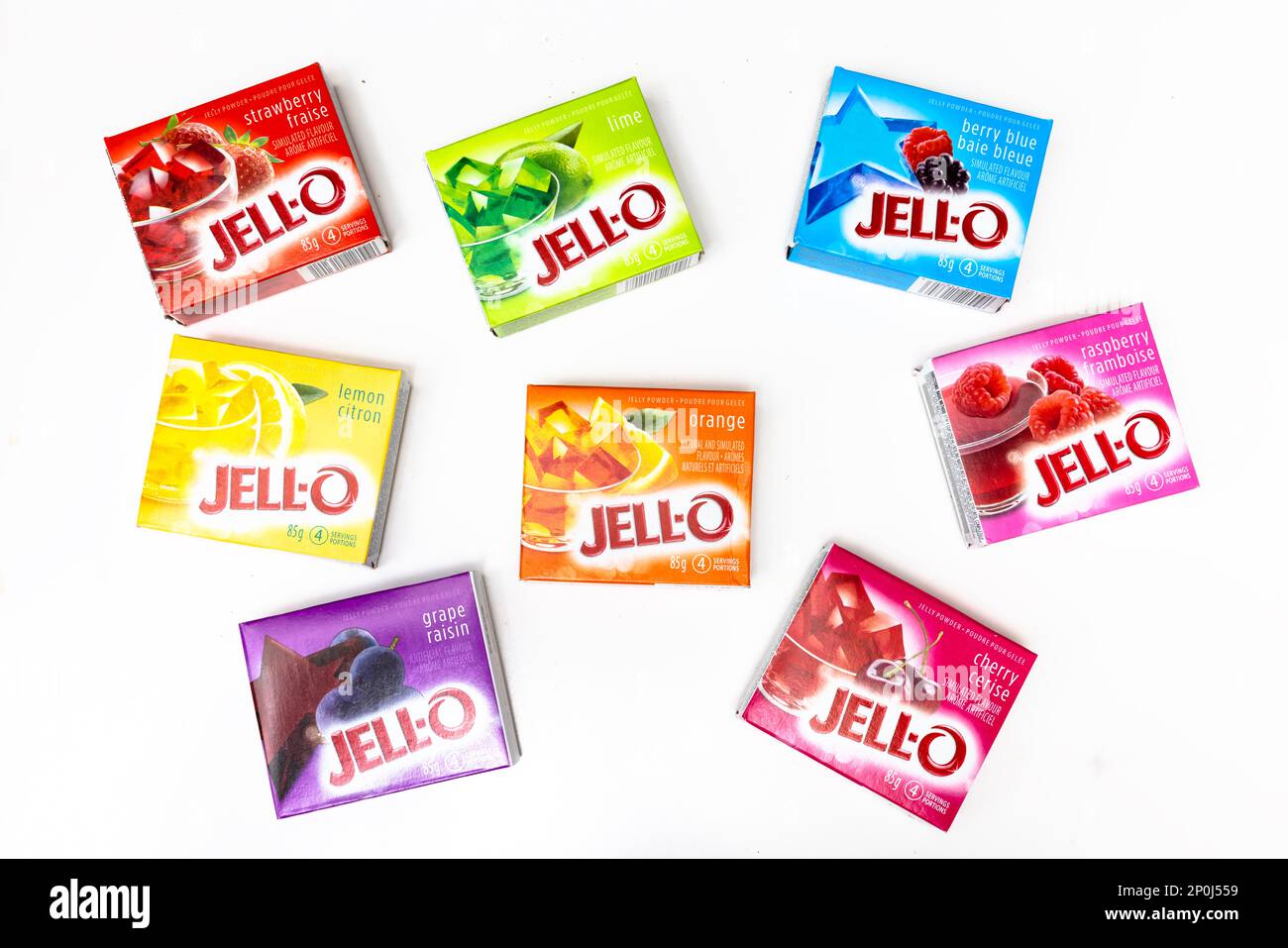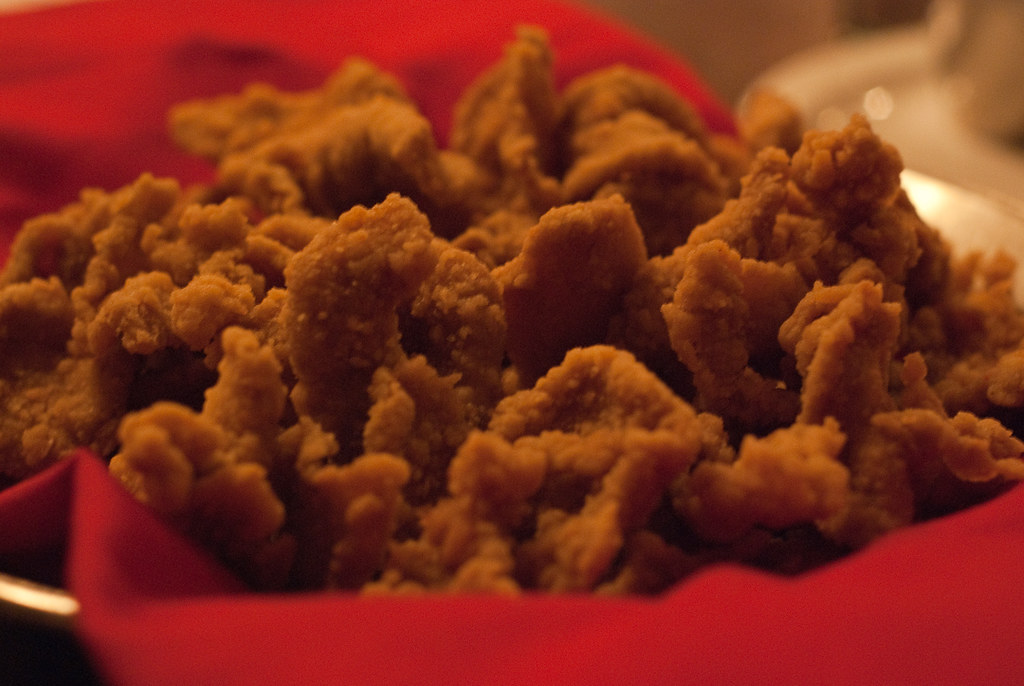
Ever flip through ancient recipe books or listen to your grandparents reminisce over their favorite dinners and think, “Wait… did humans actually eat that?” It’s crazy when you think about how much our plates change over time, almost like how fashion trends or social media crazes do. Foods become hot, have their fifteen minutes of fame in the culinary world, and then silently disappear into obscurity, leaving us to wonder, “Whatever became of that?”
The culinary world, much like the fashion industry, is a dynamic landscape where tastes, interests, and even technological advancements dictate what graces our tables. Some dishes capture the zeitgeist, becoming staples in homes and restaurants, only to eventually ebb and flow, falling out of favor. These aren’t just old-fashioned recipes; they are freeze-frames of entire periods, telling us how we lived, what mattered, and even how technology influenced our meals.
From thick family basics to offbeat snacks that had their day, America’s culinary past is filled with foods that we used to love but have since lost. Changes in grocery store offerings, evolving culinary tastes towards simpler, more natural flavors, a growing health consciousness, and even major societal shifts have all played a role in these particular foods losing popularity amongst Americans. So, get comfortable in your chair, and come along with me on this food time machine. We’re going to travel back to explore some of the once-adored dishes that are all but gone from our plates, victims of changing tastes, emerging health trends, and our constant quest for convenience. Warning: you may find yourself saying, “Wait, I used to totally eat that!”

1. **Jell-O Salad: The Jiggly Queen That Lost Her Crown**If any dish could be crowned the undisputed queen of 1950s American dinner parties, it would undoubtedly be the Jell-O salad. These vibrant, shimmering monuments of gelatin, often filled with an astonishing array of ingredients from whipped cream and pineapple to mini marshmallows, were an unmistakable fixture. They weren’t just a dessert or a side; they were a spectacle, a colorful centerpiece that added a touch of whimsical elegance to any gathering.
Back in its heyday, a gelatin mold was more than just quirky fare; it was a bona fide status symbol. Crafting one of these elaborate masterpieces, especially before boxed mixes made the process a little easier, was both labor-intensive and expensive. To present a perfectly molded Jell-O salad was to showcase a certain level of culinary skill and access to modern conveniences, making it superstar potluck fare that wowed guests and delighted families.
However, the reign of the Jell-O salad was not to last forever. By the mid-1970s, its popularity had crashed so dramatically that several flavors were discontinued entirely. This decline can be directly attributed to significant societal changes, particularly the rise in women joining the workforce in larger numbers. With less time for elaborate preparations, the demand shifted towards quicker and simpler meal solutions, leaving labor-intensive molded gelatin masterpieces in the past.
Today, the polarizing textures of lime Jell-O, cottage cheese, and canned pears – a combination many younger Americans have never even experienced – largely remain a relic of a bygone era. You’ll mostly spot these jiggly creations at grandma’s formal dinners, offering a nostalgic glimpse into a time when aspics were chic and a molded salad was the height of culinary fashion.

2. **Cottage Cheese: From Diet Staple to Dairy Dilemma**For decades, cottage cheese was a true heavyweight in the American diet, especially throughout the 1970s and well into the 1990s. Marketed heavily as a slimming food, its consumption soared, with the average American eating nearly 5 pounds of it in the 1970s. By the early 1990s, this figure had even increased, reaching approximately 4.6–5.3 pounds per capita annually across the country, making it a ubiquitous presence in refrigerators nationwide.
However, the 1980s marked the beginning of a significant shift. The dairy landscape was about to be reshaped by a new contender: yogurt. With its superior taste, smoother texture, and undeniably more charming marketing, yogurt began to chip away at cottage cheese’s dominance. Consumers gravitated towards this fresher, more versatile alternative, initiating a decline in cottage cheese consumption that would continue for years.
Statista reports paint a clear picture of this dramatic shift, showing that the figure declined to about 2 pounds of cottage cheese per person per year by the early 2020s. This represents a staggering decline of as much as 58% from its peak popularity. The once-unshakeable position of cottage cheese as a go-to snack and diet food had been comprehensively eroded by the relentless rise of the yogurt industry.
While cottage cheese did experience a slow resurgence thanks to the power of social media, with TikTok and Instagram influencers showcasing its incredible versatility in viral recipe hacks – yes, you can even make ice cream with it! – its prior fall from grace was undeniable. This high-protein food, though now enjoying a moment in the digital spotlight, serves as a prime example of how quickly even a deeply ingrained food item can lose its widespread appeal in the face of evolving consumer preferences and savvy competition.

3. **Fruitcake: The Regifted Legend of the Holidays**There was a time when the dense, boozy fruitcake, generously studded with candied fruits and nuts, was a cherished centerpiece of American celebrations, particularly during the holiday season. Families would lovingly devote entire afternoons to the meticulous process of assembling and baking these festive loaves. Others, seeking perfection, would place orders with specialty bakeries months in advance, eagerly anticipating the arrival of their rich, aromatic fruitcake.
Fast forward to today, and the story couldn’t be more different. In a recent Mashed survey, a striking 43% of participants chose fruitcake as the holiday dessert they’d least like to see at a Christmas party, officially crowning it the most disliked dessert in the ranking. It seems the once-beloved fruitcake has suffered a spectacular fall from grace, leaving many to wonder what went wrong.
The decline in its popularity can largely be attributed to a combination of changing tastes and a rather unfortunate reputation it has cemented for itself. Modern palates often find its intensity and texture less appealing than lighter, more contemporary dessert options. This shift has consigned fruitcake to the realm of the quintessential unwanted gift, a notorious item often regifted for years and the subject of countless jokes.
Indeed, the fruitcake has become a running gag, frequently likened to a “Christmas doorstopper” – a heavy, unchanging presence that nobody truly wants but somehow always ends up with. While some traditionalists still appreciate its historical significance and unique flavor profile, for the vast majority of Americans, the fruitcake’s moment at the center of holiday celebrations has long since passed, relegated to a nostalgic curiosity rather than a culinary delight.

4. **Ambrosia Salad: A Divine Dish Dethroned**Ambrosia salad, with its vibrant mix of citrus, coconut, and marshmallows, was once a true Southern potluck mainstay, embodying a delightful trifecta of flavors and textures. Its name, “ambrosia,” derived from Greek, literally translates to “food of the gods,” hinting at the esteemed place it held on many dinner tables. To present this colorful concoction was to offer an impressive treat, a testament to generous hospitality and a touch of the exotic.
For a considerable period, this fruit salad enjoyed immense popularity, partly because ingredients like coconut and citrus were considered luxuries for most Americans. The combination of sweet, tangy, and chewy elements created a unique culinary experience that made it a sought-after addition to any festive gathering, from family reunions to community potlucks, particularly in the Southern states.
However, as dining preferences began to lean more decidedly towards healthier, lighter options, ambrosia salad slowly started to fade from the spotlight. The shift away from rich, sweet, and often processed ingredients meant that this once-divine dish found itself increasingly out of step with contemporary tastes. The modern emphasis on fresh, unprocessed produce saw its vibrant, yet sugary, charm diminish over time.
Today, ambrosia salad has largely become a culinary ghost, primarily visible only at Thanksgiving and Christmas feasts. It transforms from a regular potluck staple into a seasonal indulgence, a nostalgic nod to past celebrations rather than an everyday treat. While its whimsical charm still sparks conversation and provides a comforting blast from the past for some, its era as a widely consumed, year-round favorite has undeniably drawn to a close.

5. **Liver and Onions: The Nutritional Powerhouse That Palates Rejected**For generations, liver and onions was a common, unpretentious meal, frequently gracing dinner tables and diner menus across America. It was particularly beloved by older generations, who appreciated its hearty, no-nonsense character. More than just a simple dish, liver itself is a true nutritional superfood, positively chock-full of essential vitamins and minerals, making it one of the most nutritionally dense foods available.
Despite its impressive health credentials, the robust, gamey, and often metallic flavor profile of liver never quite managed to win over the mainstream American palate. While caramelized onions were often served alongside to soften and complement the intense taste, for many, liver remained a meal to “grit through” rather than truly savor. It was a utilitarian choice, valued for its sustenance rather than its gourmet appeal.
In recent decades, liver and onions has largely disappeared from restaurant menus, becoming an increasingly rare sight in modern meal choices, whether for breakfast, lunch, or dinner. This significant shift is directly tied to a general aversion among younger generations toward liver and other offal. Evolving palates simply don’t gravitate towards its strong flavors and unique texture, leading to its gradual decline in widespread acceptance.
As diner culture experienced its own decline and cheaper, more palatable cuts of meat like ground beef for burgers and chicken breasts became widely available and popular, liver and onions found itself further marginalized. Though those seeking a nostalgic taste often recreate it at home, and the global beef liver market is actually projected to grow significantly by 2037 for other uses, its place as a common American household meal has undeniably been lost to changing culinary preferences and generational tastes.

6. **Aspic and Savory Gelatin Salads: The Shimmering Symbol of Sophistication**In the first half of the 20th century, there was arguably no dish more indicative of culinary sophistication and domestic prowess than aspic and savory gelatin salads. Imagine shimmering towers of gelatin, artfully suspending a medley of vegetables, meats, or even seafood within their translucent depths. These were not merely dishes; they were edible architectural marvels, the ultimate status symbol at any dinner party.
This fascination with savory gelatin wasn’t just about taste; it was a powerful display of modernity and access to cutting-edge conveniences. At a time when only a small percentage of the population had electricity in their homes, let alone refrigerators and freezers, the ability to successfully create and serve such temperature-sensitive, molded creations demonstrated a household’s embrace of contemporary technology. It truly was a hot trend, signifying both wealth and forward-thinking style.
Aspic’s unique texture and often elaborate presentation were highly admired, marking it as the darling of 1960s cuisine. However, as the decades progressed, culinary preferences began a significant shift. Modern tastes gravitated increasingly towards fresh, natural, and less processed foods, rendering the once-glamorous aspic out of fashion. The intricate, often unexpected combinations of ingredients suspended in gelatin suddenly seemed less appealing.
Today, savory gelatin salads are a rare find, largely confined to retro-themed events where adventurous cooks might still dare to recreate these “time capsules on a plate.” While their historical significance as a symbol of early 20th-century dining cannot be overstated, their allure for the everyday American palate has definitively faded. It’s a vivid reminder of how our definition of “sophisticated” dining can change so dramatically over time.

7. **Meatloaf: The Humble Hero That Lost Its Way**Meatloaf, that classic ground beef and breadcrumb concoction, once stood proudly as the weekly centerpiece on countless American dinner tables. In an era when meat could be pricey, this humble yet ingenious dish allowed families to stretch a small amount of beef into a satisfying meal that could last for several days. It was a symbol of thrift, comfort, and resourceful home cooking, deeply embedded in the culinary fabric of the nation.
However, the landscape of American dining has undergone a significant transformation in recent decades. Red meat consumption, particularly beef, has seen a marked decrease. According to USDA data, Americans consumed about 89 pounds of red meat per capita in 1976, a figure that has since shifted considerably as dietary habits and health consciousness evolved. This decline in red meat preference directly impacted the ubiquity of dishes like meatloaf.
Beyond changing dietary trends, the rise of a far wider variety of meal options has also contributed to meatloaf’s waning prominence. Where once it offered an economical and hearty solution, today’s supermarkets and recipe databases are overflowing with diverse cuisines and ingredients. This abundance has made the traditional meatloaf seem less essential, less exciting, and perhaps even a bit old-fashioned compared to the endless culinary possibilities now available.
While you might still find meatloaf proudly featured on the menus of some restaurants across the United States, its presence increasingly feels like a nostalgic nod to the past. It’s gradually transforming from a family dinner staple into a “relic of a bygone era,” a comforting echo of simpler times rather than a vibrant, contemporary choice. Its journey reflects a broader shift in how Americans approach their meals, moving from necessity and tradition to variety and global influence.
Now, let’s keep our food time machine moving and explore more of these fascinating culinary casualties. From comforting casseroles to surprising savory delights, we’ll uncover the stories behind why these next seven once-adored dishes are largely missing from today’s American plates.

8. **Tuna Noodle Casserole: The Postwar Pantry Staple That Couldn’t Keep Up**If you grew up in mid-century America, chances are the creamy, comforting aroma of tuna noodle casserole was a familiar presence in your home. This dish, a true postwar staple, offered a heartwarming and convenient meal that was a go-to for many families. It was the kind of meal that embodied practicality and coziness, making good use of pantry staples to feed a hungry household.
However, the golden age of the tuna noodle casserole eventually began to dim. A growing distrust of canned tuna and processed ingredients in general started to chip away at its once-unshakeable popularity. In fact, U.S. tuna sales have seen a significant fall, dropping by almost 40% since the mid-1980s, and this decline directly dragged the beloved casserole down with it.
The reasons for this shift are multi-faceted. Concerns over mercury levels in canned tuna, coupled with a surging preference for fresh, minimally processed ingredients, started to steer consumers away from its core components. Furthermore, as palates evolved, there was a growing desire to move away from sodium-heavy options, a category into which this classic casserole, made with canned cream of mushroom soup and canned peas, squarely fell.
Today, while modern diners are increasingly leaning towards fresher flavors and lighter fare, the tuna noodle casserole still holds a special place in the hearts of those seeking nostalgia. It’s an ideal meal for a cozy night in, a delightful blast from the past that’s simple to make and still hits the spot for anyone craving that specific kind of comforting, old-fashioned warmth.

9. **Salisbury Steak (Frozen): From TV Dinner Icon to Fading Memory**For many Americans of a certain generation, Salisbury Steak was more than just a meal; it was an institution, a centerpiece of the quintessential frozen TV dinner. It symbolized convenience and a new era of ready-to-eat meals, making its way into countless homes across the nation. This dish, featuring ground beef patties generously covered in a rich brown gravy, was a staple that promised a satisfying and easy dinner.
Historically, this iconic dish is named after Dr. James Salisbury, who championed ground beef patties with gravy as a nutritious and convenient meal solution. His vision helped popularize a dish that perfectly suited the burgeoning demand for quick, no-fuss dining that could be enjoyed right in front of the television. It represented innovation in the post-war culinary landscape.
However, over the past decade, Salisbury Steak has seen a significant decline in sales, reflecting a broader shift within the frozen meal category. Between 2010 and 2020, this entire segment experienced a downturn, according to the American Frozen Food Institute. Consumers began to increasingly gravitate towards fresh, organic, and health-conscious alternatives, leaving behind the processed charm of the traditional TV dinner.
Changing tastes also played a crucial role in its descent. As palates became more adventurous and globally influenced, the demand shifted towards more gourmet, internationally inspired, or simply lighter frozen meal options. The once-dependable Salisbury Steak, though a comforting memory for some, found itself unable to compete with the wave of new culinary preferences and health-driven choices.

10. **Fondue: The Communal Delicacy That Melted Away**Remember when fondue was all the rage? It was the epitome of a shared culinary experience, a social event where friends and family gathered around a bubbling pot of cheesy, chocolatey, or even meaty goodness. The fondue pot itself was once a highly coveted item, often gracing wedding registries and serving as a symbol of sophisticated, interactive dining in American homes.
However, the allure of home fondue-making has seen a steady decline since the 2000s. The once-beloved communal experience has become increasingly scarce as fewer people host the elaborate, hours-long dinner parties that fondue truly demands. In today’s fast-paced world, the idea of spending an entire evening dipping and stirring, while delightful, simply doesn’t fit into many modern entertaining styles.
Consequently, the fondue pot has largely transitioned from a must-have kitchen appliance to more of a retro novelty, a charming nostalgia piece that might be pulled out for a themed gathering but rarely for everyday use. Its moment as a contemporary culinary trend has passed, replaced by quicker, less labor-intensive forms of entertaining.
While home fondue-making has receded from the mainstream, it hasn’t vanished entirely. You can still find fondue sets and ingredients in most supermarkets and through third-party retailers, signaling its endurance as a specialty item or a nostalgic indulgence. It stands as a delightful reminder of a time when communal dining was a more leisurely, drawn-out affair.

11. **Baked Alaska: The Flamboyant Dessert That Extinguished Its Own Flame**For the ambitious home cook, Baked Alaska was once the ultimate showstopper, the magnum opus designed to wow guests at dinner parties. This dessert, a spectacular display of hot-cold contrast, was truly the star of any fancy dinner, offering both a feast for the eyes and a delightful treat for the palate. Its dramatic presentation, often involving a tableside torching, made it an unforgettable experience.
The creation of Baked Alaska is a testament to culinary skill, demanding the precise cooking and freezing of multiple components before the grand finale of torching the meringue topping directly at the table. This intricate process, while impressive, made it a labor of love that few were willing or able to undertake on a regular basis. It was a dessert of precision and spectacle.
Today, the once-ubiquitous Baked Alaska is a rare find. According to Tastewise, a mere 0.04% of restaurants still feature it on their menus, a stark indicator of its decline. The technical difficulties and significant labor required to create this dessert have made it increasingly difficult to order or produce, pushing it out of popular demand in both home and professional kitchens.
Its fall from grace is largely attributed to a broader movement away from fussy, over-the-top desserts in favor of simpler, less production-heavy sweet endings. While its dramatic presentation still possesses the power to captivate, the era of Baked Alaska as a widely embraced culinary drama has, for the most part, faded, leaving it as a nostalgic challenge for adventurous bakers.

12. **Scrapple: Pennsylvania Dutch Delicacy Lost to Modern Palates**Scrapple, a distinct Pennsylvania Dutch delicacy, emerged from a tradition of thrift and resourcefulness. It’s a hearty mash of pork trimmings, cornmeal, and flour, originally conceived as an ingenious way to utilize every last part of the pig. This humble creation served as a filling breakfast sausage, a testament to practical cooking and a cornerstone of regional cuisine.
For generations, scrapple was a staple, cherished in the communities where it originated. It was a no-nonsense, satisfying food that spoke to a particular heritage and a way of life focused on minimizing waste. Its dense texture and savory flavor were deeply ingrained in the culinary fabric of many households, particularly in the mid-Atlantic states.
However, as modern American tastes evolved, so did grocery store sales of scrapple, which have steadily decreased since 2000. This traditional item has been increasingly abandoned by contemporary diners, who often seek out different flavor profiles and less rustic preparations for their breakfast tables. The shift away from traditional, thrifty fare is evident.
One of the primary reasons for its decline lies in its very composition. The frank admission that it’s made from “pig parts” doesn’t particularly appeal to the modern eye, which often prefers more conventional and less transparently sourced ingredients. This lack of perceived appetizing quality has unfortunately given scrapple a challenging reputation, pushing it further into obscurity for many.

13. **Rocky Mountain Oysters: A Frontier Delicacy That Didn’t Migrate**The bravely named Rocky Mountain oysters, more colloquially known as testicle fries, were once a surprisingly prevalent dish in American diets. This frontier delicacy held a significant place, especially in resource-scarce periods such as the Great Depression and World War II, when organ meats played a central role in providing sustenance. It was a practical, if unglamorous, food choice.
According to Scientific Origin, the widespread consumption of offal, or organ meats, during these times was a testament to the ingenuity and necessity of making every part of an animal count. These dishes were integral to the diet of many Americans, particularly those connected to the small, family-run farms where such resourceful eating was a way of life.
However, the postwar era ushered in rapid industrialization and large-scale meat production, which dramatically changed consumer habits. The newfound abundance and convenience of more conventional cuts of meat, like steaks and roasts, began to overshadow the traditional appeal of offal, pushing items like Rocky Mountain oysters to the periphery of the American plate.
Younger generations, growing up disconnected from the traditions of eating offal and the farming practices that necessitated their consumption, have contributed significantly to the declining prevalence of these dishes. As a result, Rocky Mountain oysters have transitioned from a functional food item to an increasingly rare culinary curiosity, largely confined to niche markets or nostalgic establishments.

14. **Fried Brain Sandwich: The Midwest Specialty That Faced a Frightening Foe**Once upon a time, the fried brain sandwich was a distinct Midwest specialty, a unique dish that found its way onto menus and into eateries all across the country. Gaining popularity in the early 20th century, this unusual offering showcased a specific culinary adventurousness that was, for a period, widely embraced. It was a regional favorite that expanded its reach.
The appeal, for those daring enough, lay in its distinctive texture and savory flavor, offering a departure from more conventional sandwich fillings. It represented a time when different cuts and parts of animals were more commonly consumed and celebrated in various forms, pushing culinary boundaries in a way that is less common today.
However, the journey of the fried brain sandwich took a sharp and dramatic turn, effectively relegating it to the status of a historical relic. The primary catalyst for its rapid decline was the emergence and widespread fear surrounding Mad Cow Disease, a neurological disorder. The terrifying prospect of a disease caused by eating the brains of infected cows had a direct and devastating effect on its popularity.
This health scare instilled a profound public aversion, making it a dish that few places still dare to offer, and even fewer consumers would consider ordering. The fried brain sandwich serves as a potent reminder of how public health concerns and scientific understanding can swiftly and decisively alter deeply ingrained culinary habits, pushing even once-popular foods into near-total obscurity.
And there you have it, a journey through the vanished flavors of America’s past. These aren’t just old recipes that nobody makes anymore; they’re delicious, sometimes daring, stories of how our country has changed. From kitchen conveniences that reshaped dinner to health scares that rewrote menus, these foods reflect our evolving culture, our changing priorities, and our unending quest for new tastes. It’s a wild ride, isn’t it, to see what was once a sensation fade into a whisper? Our plates are always telling a story – one bite at a time.



